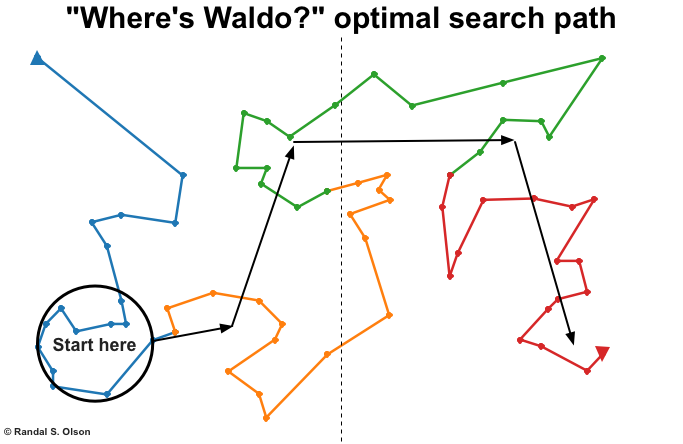Remember all those hours you spent scouring Where’s Waldo books as a child, looking for that elusive figure hidden in plain sight? Well, science has just obliterated all your efforts to vain.
The new method derived by Randy Olson, a grad student at Michigan State University’s High-Performance Computing Center, entirely defeats the simple pleasure of aimlessly staring at a page covered in animated characters that look like Wally, but are in fact imposters planted by the impossibly talented Martin Handford, creator of the Where’s Wally books.
Apparently, Olson had been trapped at home by a snow storm, which gave him time to spare. He used that time to derive the method for finding Wally fastest using a data set mapping out all of Wally’s positions across all 68 of Handford’s books published since 1987. The co-ordinates were then plugged into a genetic algorithm – a search process that mimics the process of natural selection used in artificial intelligence as part of machine learning. The result was a trial and error search that optimised the fastest route to take across the page to find Wally.
The method – to complicated to reproduce here in its entirety – has yet to be put to the test, but should you really need to find Wally fast, rather than enjoy the search, this could be your savior. Or it could be your killjoy.




